Unit-Tests are essential to ensure the quality and stability of your software. In this guide, you will learn which Best Practices you should consider when writing effective unit tests in Python. These principles will help you create structured and traceable tests that form a solid foundation for your project in the long run.
Key Findings
- Each test should perform exactly one check.
- The order of the tests is irrelevant; they should be independent.
- Meaningful and longer test names are better.
- Test results should be quickly retrievable.
- Test before working on new changes.
- Use version control in conjunction with unit tests.
- Tests should focus on a single function or class.
- Use mocks for external data sources.
Step-by-Step Guide
1. Perform only one check per test
A central principle of unit tests is that each test should fulfill a single task. This makes the tests clearer and simplifies troubleshooting. If you perform multiple checks in one test, it can be difficult to figure out exactly what has failed.
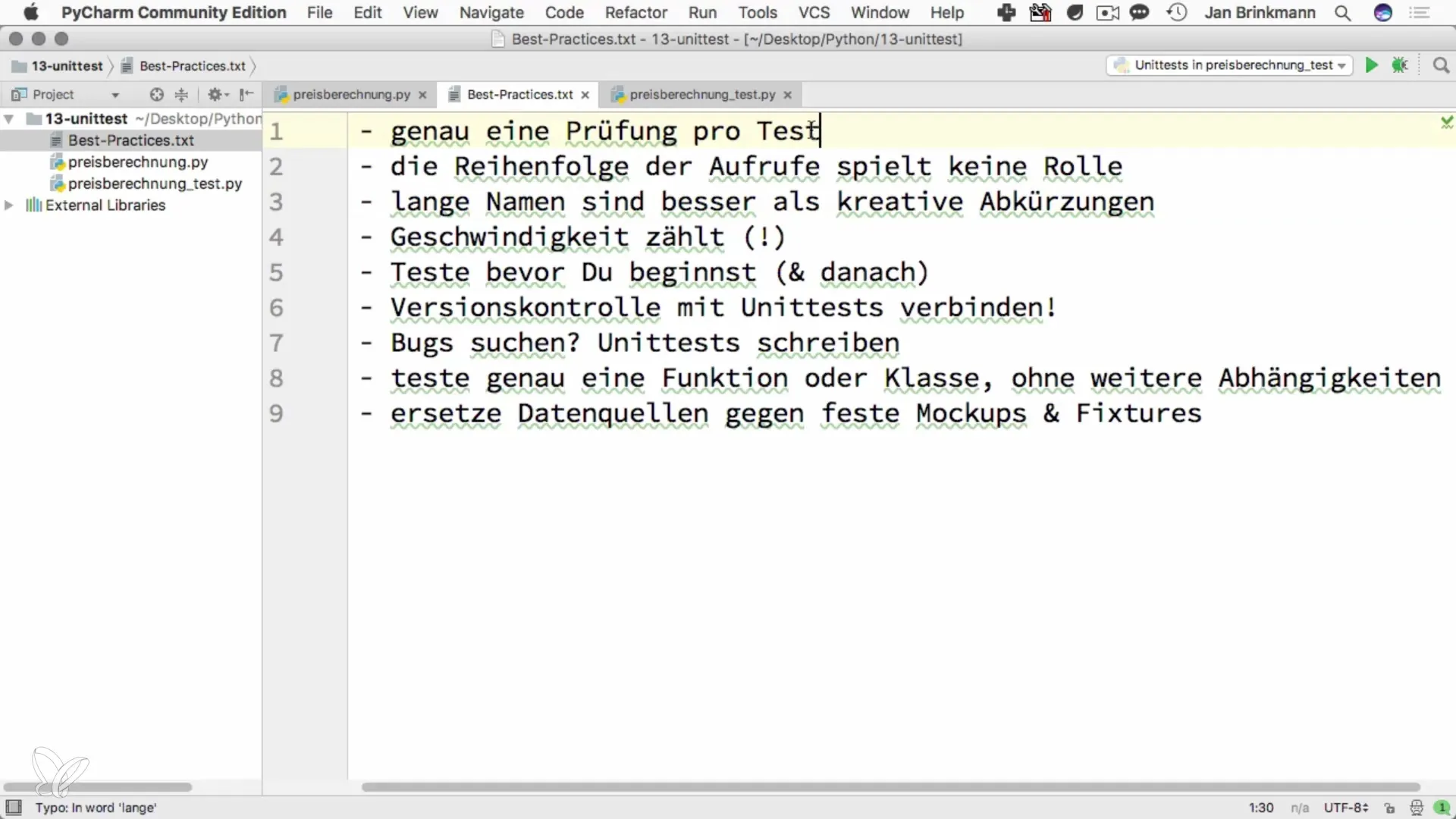
2. Independence of tests
The order in which tests are executed should not matter. Each test must run in isolation from the others to ensure that a failure in one test does not affect the results of another. Make sure that all necessary objects are freshly instantiated at the beginning of each test.
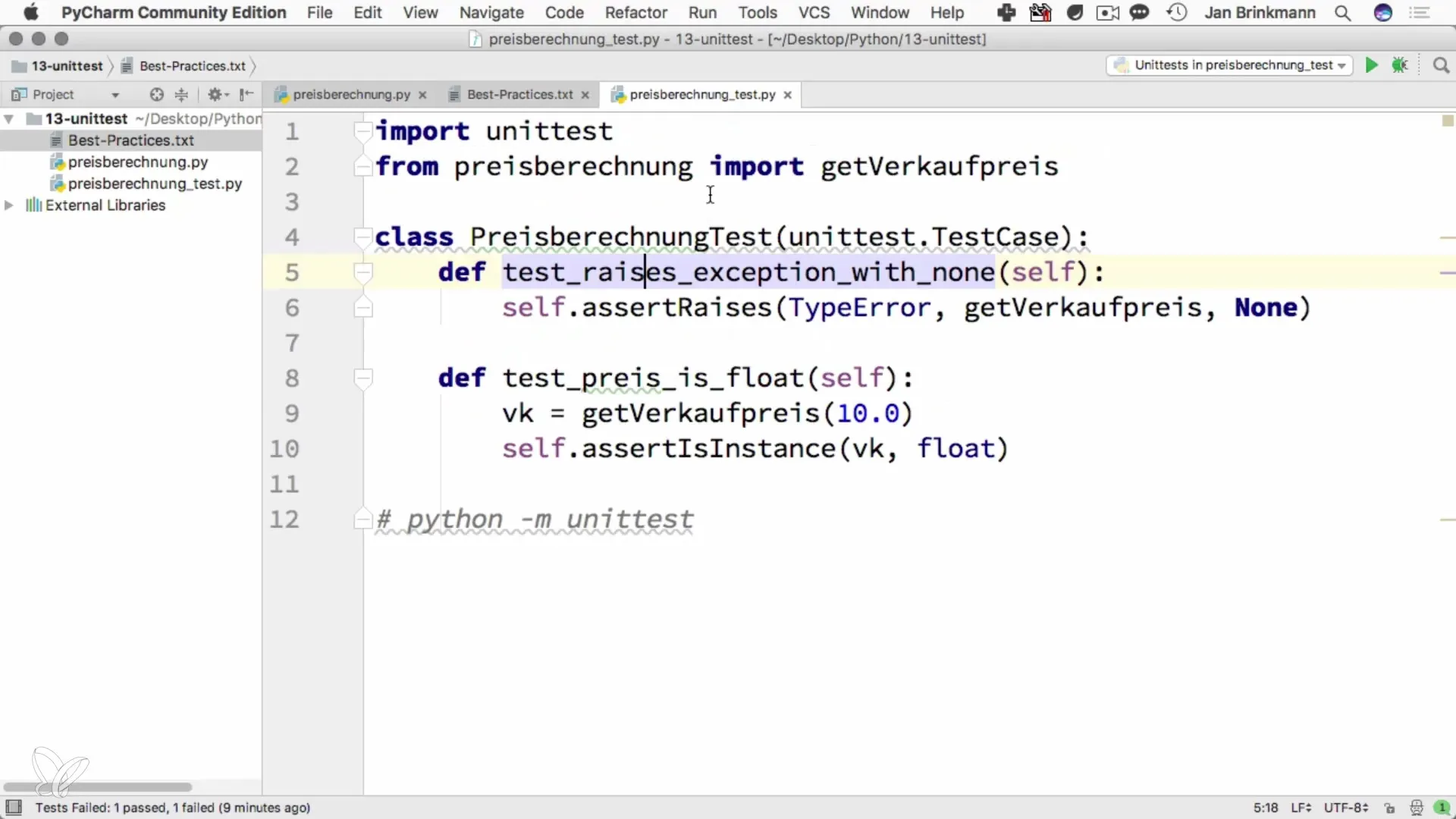
3. Meaningful naming
Use descriptive and, if appropriate, longer test names that clearly indicate what is being tested. A clear test name helps you and other developers quickly understand the test intentions without having to sift through the entire codebase. Instead of using an abbreviation, choose names that adequately describe the test.
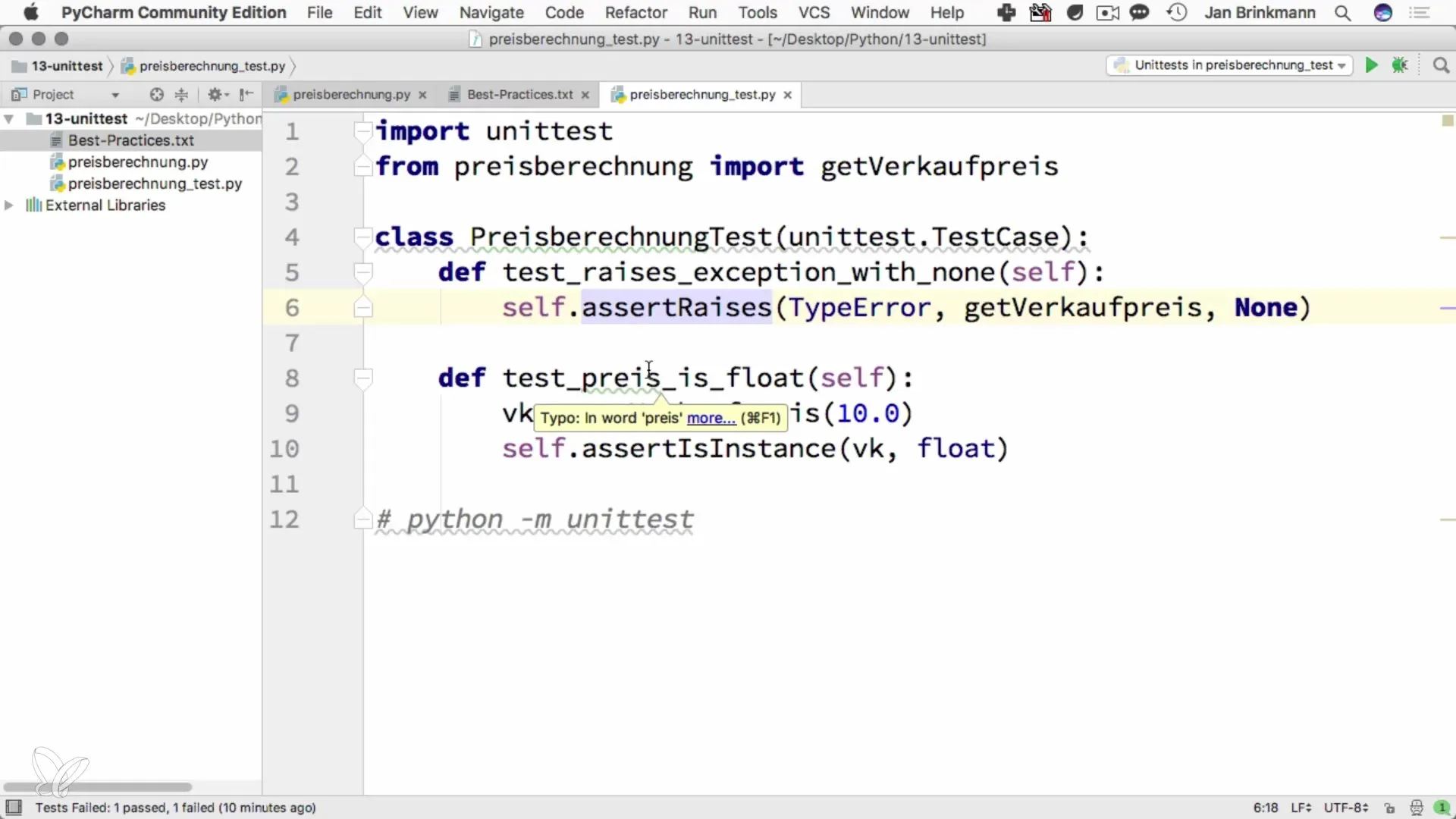
4. Speed optimization for tests
Speed is an important factor for unit tests. When working with large datasets, the execution time of your tests can quickly increase. Ensure that individual tests do not take too long to keep them efficiently integrated into the development process.
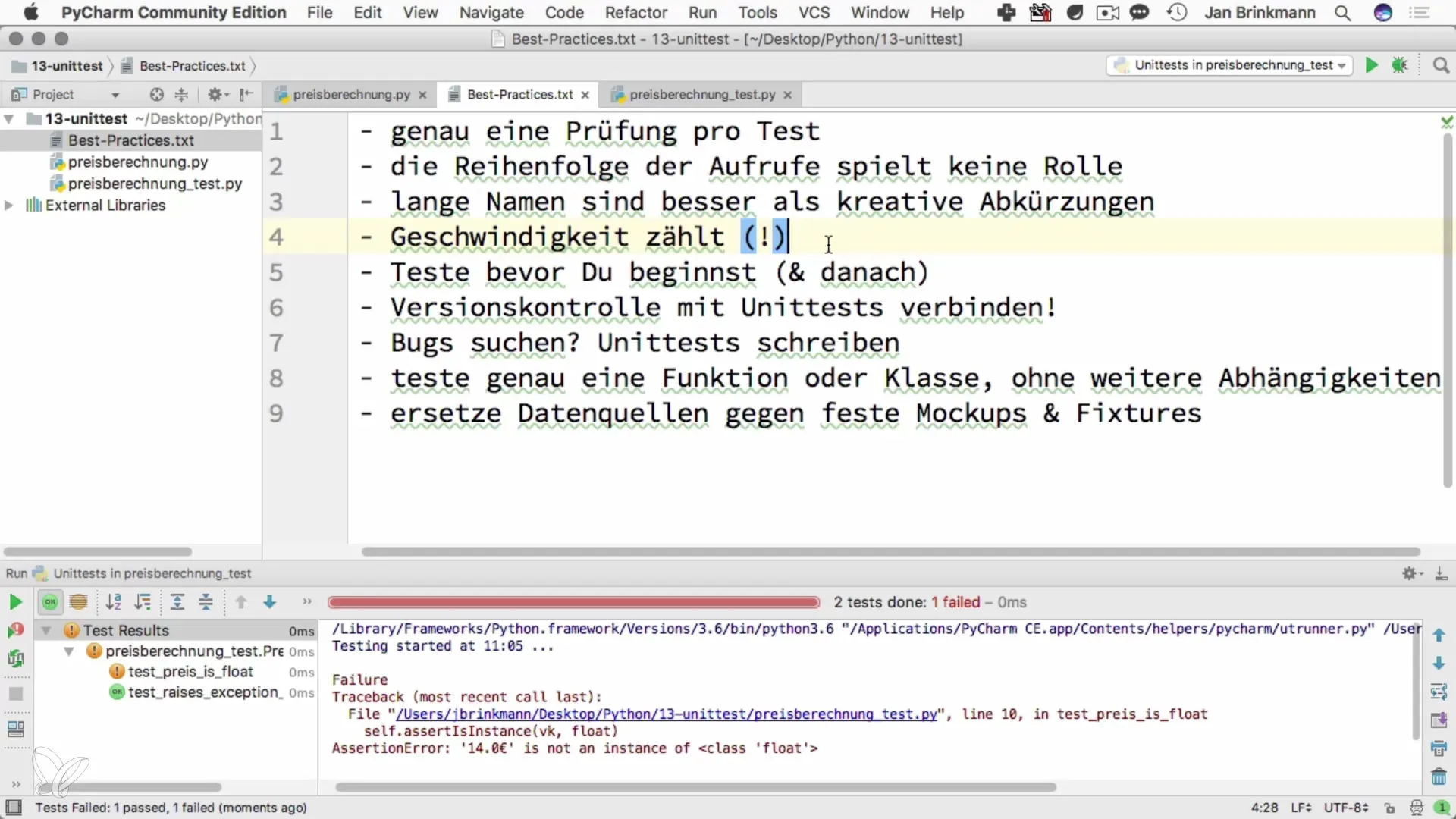
5. Conduct a pre-test
Before you start making new changes, run all existing tests. This gives you confidence that the current state is acceptable. If you then make changes and the tests fail again, you know that the problems are due to your changes.
6. Combine version control and unit tests
Use version control systems like Git in conjunction with your unit tests. Automate the process of running tests when committing new changes. Tools like Jenkins can help streamline this process and ensure that the application remains stable at all times.
7. Use unit tests for troubleshooting
When bugs occur, you can specifically use unit tests to uncover the cause of the problem. Write tests that focus on the sources of errors. This way, you can eliminate defects step by step while ensuring that existing functionalities are not affected.
8. Test independently of external sources
If your function or class relies on external data sources, such as APIs or databases, use mocks. These allow you to simulate the desired data without actually having to access the external resources. This keeps the test independent and stable.
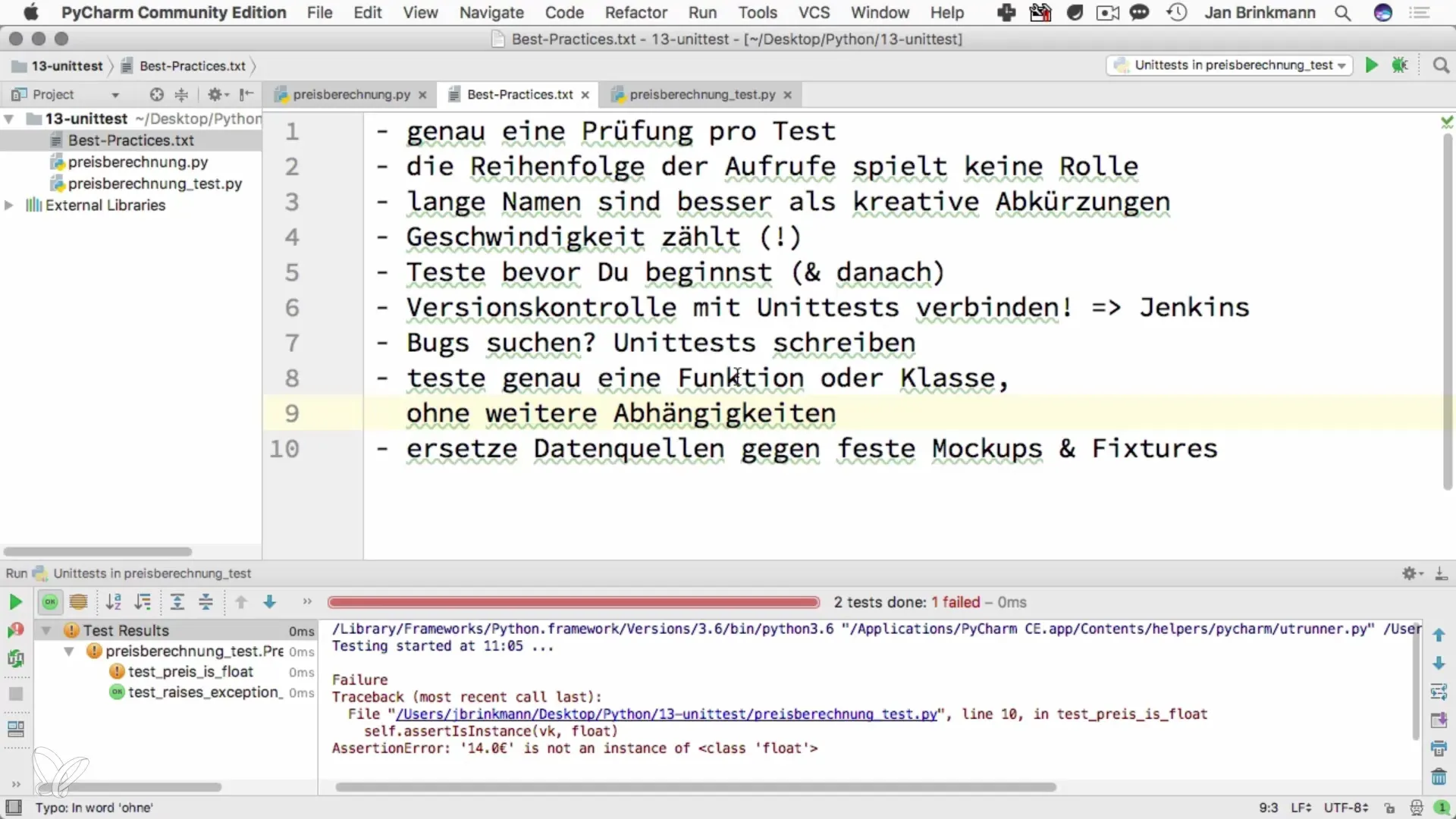
Summary - Programming with Python: Best Practices for Unit Tests
With the best practices for unit tests mentioned above, you can ensure that your tests are efficient, traceable, and reliable. These principles will help you improve the quality of your software and make future adjustments and expansions easier.
Frequently Asked Questions
What is the purpose of unit tests?Unit tests help identify errors early and ensure software quality.
How many checks should I perform in a test?Each test should include exactly one check.
Why are meaningful test names important?They make it easier to understand and troubleshoot the tests.
How often should I run my tests before working?Run your tests every time before you make changes to the code.
How do I combine version control with unit tests?Automate the execution of tests with each commit in your version control system.


